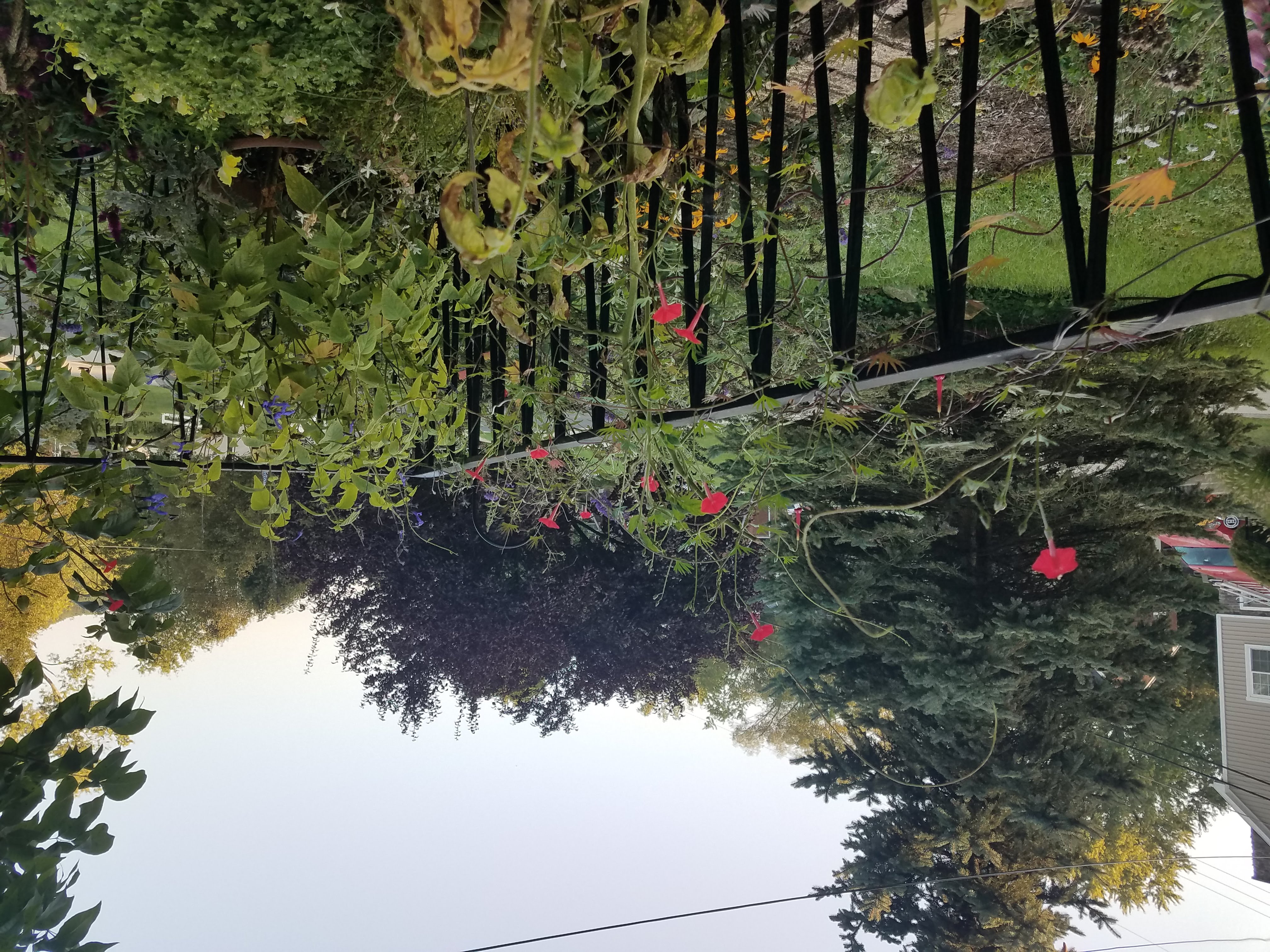Part 2 – Passive Down Time
In last week’s post, I said that meditation comes more easily to me than does play, but I am fairly sure that both are going to be necessary for me as I try to make good on my recent commitment to create more balance in my life. This week we will dive into meditation…
At its most basic form, meditation is a focus on breath. Depending on the style you practice, it can involve emptying your mind entirely or focusing on a phrase that is meaningful to you. Regular practice has been linked to numerous health benefits, particularly in alleviating conditions that are made worse by stress, such as asthma, heart disease, high blood pressure, insomnia, and irritable bowel syndrome.[1] There are many different types of meditation, and they all claim specific benefits, but ultimately the best kind (spoiler alert) is whatever works for you.
It’s highly likely that I’ve had more exposure to meditation than the average American. According to Pew Research, 40% of Americans say they meditate at least weekly, which is far higher than I would have guessed.[2] Several online sources reference an unsupported statistic from TheGoodBody.com saying that 200-500 million people worldwide practice meditation,[3] but given our global population of 7.9 billion, that number strikes me as impossibly small, particularly because I have encountered meditation (or something like it) in so many different religious settings.
Hindu Tradition
I’ve practiced various types of religion-based or religion-adjacent meditation throughout my life, most notably through Hinduism,[4] Zen Buddhism,[5] unprogrammed Quaker worship (if you count that),[6] and yoga (again, if you can count that).[7] My first introduction to meditation was in high school, when my mom and I attended meditation workshops every Saturday at a Hindu ashram. If I’m being completely honest, I was primarily there for the amazing food we would get in the cafeteria afterward, but I did thoroughly enjoy the lectures about finding peace in the midst of chaos, followed by guided meditation and chanting.

The atmosphere at the ashram was one of quiet mindfulness and serenity – an alien world compared to my break-neck, triple-booked schedule of extracurricular activities. Surprisingly, I don’t recall having much difficulty in switching gears and settling into a fairly disciplined state of meditation on those Saturdays. It might have been that my young mind was more nimble, but it probably also helped that most of my mental energy was used up by chanting mantras (repeated phrases) in Sanskrit, which was the point.
Our swami explained to us that the purpose of a mantra is to keep your mind focused on one thing, which helps to keep it from wandering. The example he used was that of an elephant being led through a marketplace. The elephant, if allowed to, will pick fruit out of the various stands and eat it as he goes, racking up a hefty price for his owner. However, if the owner trains the elephant to hold a stick in his trunk, the elephant cannot pick up pieces of fruit as long as he is holding the stick. The mantra is the stick.
Some practices, such as Transcendental Meditation, involve a unique mantra created for you to support your journey of self-actualization. In looking for additional information on the practice, I was shocked to find a significant paywall plastered with celebrity endorsements and payment plans for one-on-one training with a certified instructor.[8] I know people who have benefitted from that specific practice, but I also can’t help but think of John Lennon, who was turned off by the commercialism that followed in the wake of TM’s popularity.
I really loved using mantras to focus my meditation practice, but it didn’t really matter to me what we were saying; just as long as there was something to focus on and repeat. At our meditation workshops, we rarely tried the same thing twice, and we found different benefits as we went (increasing focus, or awareness, or connection with a higher power). And really, you don’t need someone to create a mantra for you – anything you want can be a mantra, even if it’s just counting breaths. I’ve spoken before on this blog about how running is like a moving meditation for me, and when I get into the last 6-8 miles of a marathon, all I can do is count breaths and let everything else (pain, exhaustion, boredom) fall away.

Zen Tradition
My first experience with counting breaths as part of meditation was in college. One of my favorite classes, Religions of China and Japan, involved several incredible field trips into New York to experience aspects of the cultures we were studying. While studying Zen Buddhism, we attended a meditation class in Manhattan in a building that felt like a Japanese temple as soon as we walked through the doors.
“Zazen,” or seated meditation practice, is a little less forgiving than the devotional chanting from the Hindu tradition I was used to. The practice involves sitting – just sitting. We each sat on individual mats around the room, facing out toward the wall. While looking at the blank wall, we focused on our breath, counting each exhale, one to five, and then starting over.[9] We quickly learned that zazen practice also involves stick-wielding priests walking around the room to slap novices who doze off or lose focus during meditation. (They cut us a break.)
Counting one to five is a mantra of sorts, but it requires a lot less mental bandwidth than singing in Sanskrit. For that reason, it is a lot easier for your mind to wander. The state of a restless mind in meditation is called “monkey mind,” and it’s not a matter of if it happens, but when. When it does, you simply acknowledge the intruding thought and set it to the side. Judging yourself for not being better at meditation only makes it worse. I personally like to smile when setting each thought aside, as a reminder to be kind to myself. (It makes me think of the meditation that Elizabeth Gilbert undertook at the end of “Eat, Pray, Love” which consisted only of sitting and smiling for half an hour every day.[10])
Sustainable Practice
I have been meditating twice daily since we got back from our trip. It started out as a way to transition in and out of my work day while at home. I haven’t gotten around to picking a mantra yet, so I usually just count my breaths. I don’t take much time, just 10 minutes in the morning and again in the afternoon, but I was shocked at how out of shape I am for meditation. Usually when my mind starts to wander, I wonder how much time has elapsed… but then once my 10 minute alarm goes off, I’m surprised at how quickly the time has gone.

Ultimately, if you want to cultivate a practice, you need to find a way to make it work for yourself. Setting aside time and protecting it is only part of it – you should really try out different methods and see what sticks. If you don’t feel a benefit, you’re not going to continue with it. As for me, I think I will be sticking with it for some time because of a very pleasant surprise.
In doing research for this post, I found myself in a rabbit hole of researching Sanskrit mantras and came across a YouTube channel created by the swami who led the meditation workshops I attended in high school.[11] He has an entire series on guided meditation, and I am incredibly nostalgic and excited to work my way through his videos in the coming weeks and months to refresh my memory and improve my practice.
~
Next week we’ll look at the more active side of down-time: play. Until then, I’d love to hear about your own meditation practice or questions you might have if you’ve never tried it before.
Thanks for reading!
[1] https://www.mayoclinic.org/tests-procedures/meditation/in-depth/meditation/art-20045858
[2] https://www.pewresearch.org/fact-tank/2018/01/02/meditation-is-common-across-many-religious-groups-in-the-u-s/
[3] https://www.thegoodbody.com/meditation-statistics/
[4] https://en.wikipedia.org/wiki/Dhy%C4%81na_in_Hinduism
[5] https://en.wikipedia.org/wiki/Zen#Dhy%C4%81na
[6] https://en.wikipedia.org/wiki/Quakers#Worship
[7] https://en.wikipedia.org/wiki/Yoga#Goals
[9] https://zmm.org/teachings-and-trainings/meditation-instructions
[10] https://www.goodreads.com/book/show/19501.Eat_Pray_Love
[11] https://www.youtube.com/channel/UC7i47784NqiOl244eGEJDew
0 Comments